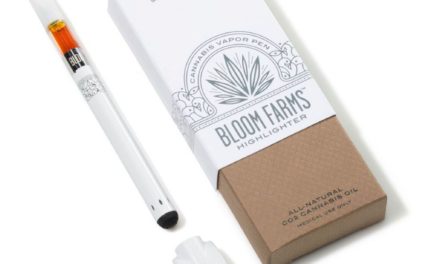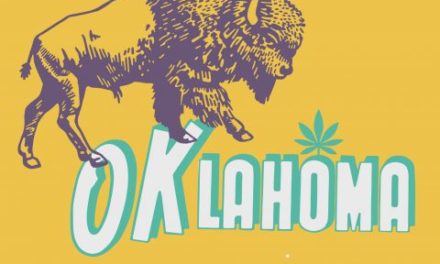CANNABIS CULTURE -Recent news stories about the discovery of a 2,500 yr old cannabis burning brazier from China, have inspired me to take a further look at cannabis long and controversial history in this area in a two part article. The first part will deal with cannabis’ role with the indigenous Han Chinese, its medicinal references in ancient China, and its role in Taoism. The second part which will follow in a couple of weeks, will discuss the recent archeological finds of resinous female cannabis among the Indo-European Gushi culture, who lived in China from 2,000-400 BCE, including the wood brazier being touted in the news recently as the first identifiable proof of cannabis with high THC content being burnt and inhaled.
[Excerpted from Cannabis and the Soma Solution, 2010)
Thought by some botanists to be the original home of undomesticated cannabis, in Asia Hemp use dates back far into the Stone Age, with hemp fibre imprints found in pottery shards in Taiwan, just off the coast of mainland China, that were over 10,000 years old. Alongside these shards were found long rod shaped tools, similar to those used in mainland China in later times to decord hemp. As well, indicating its use and popularity throughout the intervening millennia, the famous terracotta warriors were equipped with hemp soled shoes before their long sojourn into Terra-firma. As such it is not surprising the Chinese were amongst the first people to discover both the medicinal and magical properties of the plant with a history of use in these cases, along with its use as a food, fibre, and oil source for lighting and paints, going back thousands of years. “According to a Neolithic Chinese legend, the gods gave humans one plant to fulfill all needs. The plant was Cannabis sativa…. This assertion is not so far-fetched; Cannabis assuredly ranks among the world’s most remarkable plants” (Pooja, 2005).
…it is generally accepted that Cannabis sativa L. was first cultivated in China around 4500 BC when its seed served as a grain crop. Soon after its decaying stems became the source for making hemp fibre for making clothes, ropes, and fishing nets. However, reports of early hemp use in China are open to question either because of inadequate fiber remains or because they relate to impressions on pottery and other objects… Such cord impressions have been found on material from 4000 to 3000 BC unearthed in Taiwan and also similarly dated pots found in Henan Province, eastern China, at an archeological site of the Yang Shao culture, the first civilization to manufacture pottery. (Sneader, 2005)
Archaeologist Andrew Sherratt saw a similar indication of cannabis use indicated in the cord impressed pottery of ancient China, as that of Europe from the same period discussed in Chapter 3, stating “that the early use of cord-impressed pottery in China the so called Sheng-wen horizon – was associated with an early use of hemp and an appreciation (explicit in the early historical records) of its narcotic properties” (Sherratt, 1997). In relation to this comparison, it is interesting to note (and as will be discussed later in this Chapter) recent discoveries in China document contact with Indo-European culture began considerably earlier than previously believed. Thus it has been suggested that “Cannabis, or marijuana, probably originating north of South Siberia, was a key trade item and part of the religio-shamanic complex in the Mesolithic period spreading from Romania to China prior to the end of the Stone Age” (Sinclair, 2007).
As Professor of Botany Hui-Lin Li, an expert on the history of cannabis in China notes, “The evidence… suggests that the medicinal use of the hemp plant was widely known to the Neolithic (Stone Age) peoples of north-eastern Asia and shamanism was especially widespread in this northern area and also in China, and cannabis played an important part in its ritual” (Li, 1975). Likewise, expert on Chinese history, Joseph Needham has also noted, “…the hallucinogenic properties of hemp were common knowledge in Chinese medical and Taoist circles for two millennia or more” (Needham, 1974).
The Chinese glyph for hemp, Ma, is usually described as a depiction of two harvested hemp plants hanging to dry in a shed. Generally this has been regarded as representing the use of cannabis for fibre, but contrarily, like most cultures, the Chinese retted their fibre hemp in fields or in ponds, soaking the stiff stalks of the of the plant in order to break down the cellulose and allow the long fibres of the stalk to break free more easily. However, when psychoactive effects are the goal, hanging to dry is the more common cross-cultural method used with cannabis. Professor Hui-Lin Li, in his extensively researched essay The Origin and Use of Cannabis in Eastern Asia: Their Linguistic-Cultural Implications, notes a double meaning for ma (hemp); the first, “numerous or chaotic… derived from the nature of the plant’s fibres. The second connotation was one of numbness or senselessness, apparently derived from the properties of the fruits and leaves which were used as infusions for medicinal purposes” (Li, 1975). This double connotation has been noted by other scholars; in her essay ‘Religious and Medicinal Uses of Cannabis in China, India and Tibet,’ Mia Touw notes;
There may… be some etymological evidence to support the idea that the Central Asians were the first to learn about the biodynamic potentialities of cannabis. Of the various Chinese words for hemp, ta-ma (great hemp), huo-ma, huang-ma, ban-ma (Chinese hemp), it was hu-ma, or fiery hemp (as the meaning has been construed by some etymologists), which also meant Scythian hemp (Stuart1911) and this latter kind was held to be especially potent. (Touw, 1981)
In relation to this it is relevant to note that Ma, Hemp, appears in two characters which also indicate the preparation of cannabis for intoxication. The first comes from the Chinese symbol for ‘Rub’, Mo , comprised of the symbols for ‘hand’ and ‘hemp’. This could conceivably be derived from the ancient technique of crumbling cannabis into a powder by rubbing the dried leaves and flowers together between the palms, which has been seen as a common method of preparation in China (Starks, 1990). Li also notes “mo, grind (combining ma with stone)” (Li, 1975), Which also brings to mind the another age old technique of breaking down cannabis with stones, as in the preparation of Haoma/Soma. The linguistic root of the word haoma, hu-, and of soma, su-, suggests ‘press’ or ‘pound’ (Taillieu, 2002).

Fig 1: Ma-‘Hemp’Although from what can be gathered from the ancient references we are dealing with whole dried cannabis preparations instead of rubbed hashish, it is also worth mentioning that a traditional method of collecting cannabis resin is to rub the palms of the hand together over the flowering sticky buds of cannabis, and then scrape the resin off of the palms of the hand, a technique popular in both Nepal and Chinese Turkestan. The suggestion that hu ma originally grew in Turkistan, a site known for the production of hashish up until modern times, has been attributed to the Taoist adept T’ao Hun Kin (AD 451 – 536). In relation, modern archeological evidence for the use of “hemp for textiles, ropes, fish lines, and threads” have been found at Neolithic sites in the area dating back 5,000 years (Merlin, 1972). T’ao Hun Kin was “a drug hunter and alchemist, and immortality fiend” and this would explain his interest in cannabis, for as we shall soon show the trinity of Taoism, drugs, and the search for immortality, has had a long shared history of combination.
The earliest reference to the use of marijuana as a medicine, however, is traditionally believed to have occurred sometime around 2,800 BCE (although this date may be considerably contentious), in the medical compendium, the Pen Ts’ao of the legendary Chinese Emperor Shen-Nung. The Pen Ts’ao has it that by the time of its composition cannabis was already quite widespread, “hemp grows along rivers and valleys at T’ai-shan, but it is now common everywhere.” As Emperor, Shen-Nung was concerned that the priests were unable to effectively treat the maladies of his subjects by performing magical rites, and decided to find alternative remedies for the sick. Despite being emperor, Shen-Nung was apparently also an expert farmer, and had a thorough knowledge of plants. With this in mind, undoubtedly taken alongside a knowledge of indigenous folk remedies, Shen-Nung decided to explore the curative powers of plants, using himself as the test subject. History turns to myth here, as ancient compilers state that Shen-Nung was aided in his studies by having the superman like power of being able to see through his abdominal wall and into his stomach, enabling the Emperor to observe the effects of the plants he experimented with on his digestive system! In relation to such testing by imperial methods it is interesting to note that the Pen Ts’ao also mentions ma-pho, a term that means a sudden change of mood, such as intoxication.
In the Chinese cosmology, the universe is composed of two elements, the Yang, representing the strong, active, positive masculine force and Yin, the weak, passive and negative female influence. In the individual, when these forces are in balance, the body is healthy, but too much of one or not enough of another and the result is dis-ease. In the case of the application of marijuana to such an ailment, this was difficult as it had both male and female plants, and contained both yin and yang. Shen-Nung determined that it was the female plant that contained the most potent medicine, being a very high source of yin, and prescribed chu-ma (female hemp, as opposed to ma, hemp) for the treatment of absentmindedness, constipation, malaria, beriberi, rheumatism and menstrual problems. The “Father of Chinese Medicine”, Shen-Nung, was so thoroughly impressed with the beneficial effects of chu-ma, he deemed it one of the Superior Elixirs of Immortality. Hemp’s association with immortality in China, was apparently quite widespread. In Myths of China and Japan, MacKenzie refers to a “Rip Van Winkle story that two men who wandered among the mountains met two pretty girls. They were entertained by them and fed on a concoction prepared from hemp. Seven generations went past while they enjoyed the company of the girls” (Mackenzie, 1923).
The hemp (old Persian and Sanskrit bangha) was cultivated at a remote period in China and Iran. A drug prepared from the seed is supposed to prolong life and inspire those who partake of it to prophecy after seeing visions and dreaming dreams. (MacKenzie, 1923)

Fig 2: Emperor Shen Nung, by author.
From the time of Shen-Nung onward, Chinese physicians continued to prescribe marijuana, and as they became more familiar with the effects of the plant, new discoveries were made about its properties, such as that made in 200 AD, by the early and well-known Chinese surgeon, Hua T’o. Almost 2,000 years ago Hua T’o is reputed to have performed such complicated operations as “organ grafts, resectioning of intestines, laparotomies (incisions into the loin), and thoracotomies (incisions into the chest)” (Abel 1980). Moreover, these dangerous and complicated surgeries were rendered painless by an anesthetic prepared from cannabis resin and wine known as ma-yo. An excerpt from his biography gives us a descriptive account of how this ancient medical sage utilized cannabis in these procedures;
… if the malady resided in the parts on which the needle [acupuncture], cautery, or medicinal liquids were incapable of acting, for example, in the bones, in the stomach or in the intestine, he administered a preparation of hemp [ma-yo] and, in the course of several minutes, an insensibility developed as if one had been plunged into drunkenness or deprived of life. Then, according to the case, he performed the opening, the incision or amputation and relieved the cause of the malady; then he apposed the tissues by sutures and applied liniments. After a certain number of days the patient finds he has recovered without having experienced the slightest pain during the operation.
Throughout the ancient world, medicine held all sorts of magical connotations in people’s minds; thus not surprisingly, “The Chinese pharmacopeia Rh-Ya, compiled in the 15th century B.C. contains the earliest reference to Cannabis for shamanistic purposes” (Langenheim, 2003). Ancient Chinese Shamans showed their awareness of cannabis medical powers symbolically, by carving serpents into a stalk of hemp and using it as a magic wand for healing ceremonies. In reference to shamanism it is important to note that China’s ancient use of cannabis flowers and leaves was not limited to medicine, “…in ancient China…medicine had its origin in magic. Medicine men were practicing magicians” (Li, 1978). Emperor Shen-Nung stated that beyond medical use, cannabis: “If taken over a long term, it makes on communicate with spirits and lightens one’s body.” In relation to this it is interesting to note that the use of the glyph for Hemp, Ma in combinations with other characters appears in glyphs with supernatural connotations, as with Mo devil and this gives clear indications of the awareness of cannabis’ use in Chinese sorcery, which, as we discuss shortly, cannabis had a long history of use in. “In these early periods, use of cannabis as an hallucinogen was undoubtedly associated with Chinese shamanism” (Schultes and Hoffman, 1992).
Around 200 BCE a variety of new aromatic plants and resins appeared in the Chinese marketplace, accompanied by a new kind of incense burner, known as the boshanlu (po-shan-lu) ‘magic mountain’ brazier, and these braziers have been specifically associated with cannabis use. Not surprisingly this method became quite popular for some centuries and cannabis “occurs in various… prescriptions for gaining visionary powers” (Needham, 1974). Referring to the mythological origins of such braziers, Frederick Dannaway has suggested that the “curious episode on Daoist liturgy of the ‘stealing’ of an incense burner has similarities to the ritual ‘stealing’ of soma” (Dannaway, 2009).

Fig 3: Boshanlu incense burners
The Boshanlu incense burners were sculpted in the form of mountain peaks rising over waves, depicting the abode of the Immortals. These were essential items in the rooms of the scholars of the time. As the incense burned, the smoke rose through the perforations in the lid like an enchanted fragrant mist engulfing miniaturized mountain peaks. Focusing on his inner eye, a scholar could then imagine that he travelled in spirit to the Magic Mountain to walk with the immortals. Indicating the long term popularity of this technique a 4th century text records “For those who begin practicing the Tao it is not necessary to go into the mountains…. Some with purifying incense and sprinkling and sweeping are also able to call down the immortals. The followers of Lady Wei… and the Hsu… are of this kind.”
Analysis of ashes from these burners verified the use of a variety of fragrant plants, some of which held medicinal properties or ‘magical’ qualities that enabled communication with spirits. For spirit communication “The ‘incense’ burned was a hallucinogenic ‘sacred herb’- what we know as marijuana… the intoxicating smoke of the burning incense would waft upward from the canyon-like openings between the mountains and create the illusion of this mythical landscape.” “For these psychedelic experiences in ancient Taoism a closed room would have been necessary, and precisely the ‘Pure Chamber’ of the oldest Taoist rites…” (Needham, 1974). Expert on Chinese history, Joseph Needham, also reports that Taoists mystics were alleged to add “hallucinogenic smokes to their incense burners… The addition of hemp (ta-ma, huo-ma, Cannabis sativa = indica) to the contents of incense-burners is clearly stated in one Taoist collection, Wu Shang Pi Yao (Essentials of the Matchless Books), which must place it before +570…” (Needham, 1974).
This shamanic relationship with cannabis obviously lasted some centuries amongst Taoists and this is not surprising as “…the Taoist technique of ecstasy is shamanic in origin and structure” (Eliade, 1984). The magical use of cannabis was not limited to smoking. In the Chen Kao, “Yang Hsi describes… his own experience using the Chhu Shen Wan (Pill of Commencing Immortals) which contains much hemp” (Needham, 1974). A Taoist priest writing in the fifth century B.C. about seeded buds of cannabis noted that “magician-technicians (shu chia) say that if one consumes them with ginseng it will give one preternatural knowledge of events in the future.” “…[O]ne could add a fine +6th-century example from a Wu Tsang Ching (Manual of the Five Viscera)… ‘If you wish to command demonic apparitions to present themselves you should constantly eat the inflorescences of the hemp plant’” (Needham, 1976).
As Needham explains, cannabis was one of the establishing factors of Taoist Philosophy:
The chain of events which led to the establishment of Mao Shan… as the first major permanent centre of Taoist practice began in +349 or slightly earlier with visitations by immortals to a young man named Yang His… in a series of visions, there appeared to Yang a veritable pantheon of celestial functionaries, including the lady Wei… and the… Mao [Brothers]… In the course of these interviews, aided almost certainly by cannabis, Yang took down in writing a number of sacred texts which the immortals assured him were current in their own supernal realm as well as oral elucidations and answers to Yang’s queries about various aspects of the unseen world. He treasured and disseminated these scriptures as the basis for a new Taoist faith more elevated than the ‘vulgar’ sects of his time. (Needham, 1976)
Hakim Bey also notes that in “the early Taoist tradition of the Mao Shan, or ‘Supreme Clarity’ school, a great many shamanic ‘survivals’ can be traced, among them the intriguing fact that the Mao Shan revelations were supposed to have taken place under the influence of a ‘hemp laced incense’” (Bey, et al, 2004).
Moreover, Taoism has the honor of being the only religion (as far as I know) to personify Cannabis as a deity. In the T’ang period there existed a cult of Ma Ku, or ‘Miss Hemp’. It was centered at Mt T’ien T’ai, at a place called the precipice of Miss hemp; a statue of her stood there in Sung times…. Ma Ku was depicted as a beautiful maiden of the Taoist ‘grotto fairy’ type, but with a bird’s claws instead of feet…. In T’ang poetry she is often associated with important motifs, connected to Mao Shan meditation techniques, constellated around the imagery of time distortion. (Bey, et al, 2004)

Fig 4- Ma Ku
Ma Ku, literally, ‘Hemp Lady’, was a Taoist ‘Immortal’, who had strong connections with the ‘elixir of life,’ bringing back to mind that cannabis was deemed one of the Superior Elixirs of Immortality by Shen Nung millennia prior to this and it would seemed to have enjoyed this reputation in the intervening centuries. “…Taoist dreamed of ascending to heaven after so many years of asceticism and by taking an elixir of life concocted from various rare herbs” (Suzuki, 1961).
Something might… be gained by pursuing the mythological connection with the hemp Damsel, Ma Ku, goddess of the slopes of Thai Shan, where the plant was supposed to be gathered on the seventh day of the seventh month, a day of séance and banquets in Taoist communities. (Needham, 1974)
In relation, the Taoist philosopher Wang Yuan (146-168 CE), was said to have invited Ma Ku to a feast on the cannabis gathering day of the “seventh day of the seventh month” where “The servings were piled up on gold platters and in jade cups without limit. There were rare delicacies, many of them made from flowers and fruits, and their fragrance permeated the air inside and out.” Wang served the guests a strong liquor from “the celestial kitchens,” and warned that it was “unfit for drinking by ordinary people.” According to the ancient account, even after diluting the liquor with water, everyone became intoxicated and desired more. It is believed by some sources that the elixir referred to was a special wine made from cannabis. A Chinese poem about Ma ku by Ts’ao T’ang clearly brings to mind the beauty of budding cannabis:
Blue Lad transmits the word, requiring them to come back:
His report tells that Miss Hemp’s ‘jade stamens’ have opened.
The watchet [Blue-grey] Sea has turnd to dust –
All other affairs may be disregarded:
They mount dragon and crane and come to observe the flowers.
The ‘Blue Lad’ is a Taoist deity, and the poem describes him summoning all the fairies and immortals to witness the blossoming of Ma Ku’s flowers. “Apparently the T’ang literati argued about the identity of this ‘jade stamen-and-pistil’ flower suggesting that the truth was understood only by a few, who knew how to cultivate hemp flowers till (according to one description) they sported ‘whiskers like threads of ice, with golden grain sewn on top’” (Bey, et al., 2004). Conceivably, this could indicate that the Taoist gardeners new the secret of separating the male from female cannabis plants, to produce resinous seedless cannabis known as sinsemillia, a cultivation technique generally assumed to have been developed much later.
Considering that Shen-Nung’s references in the Pen Ts’ao are thought to have originated around 2,800 BCE, and that as late as the tenth century CE references to cannabis’ ability to enable one to ‘communicate with spirits’ were still being noted, in China, we are discussing the shamanic and cultural use of a plant that stretches over 3,500 years. A beautiful quatrain from the classic ‘Greater Lord of the Long Life’, believed to be written around 300 BC, gives a clear impression of cannabis’ importance to the mystics of ancient China:
First a yin then a yang
No one knows what I do
Jade buds of holy hemp
For the one who lives apart
The Chinese love affair with cannabis eventually soured, as Mia Touw explained; “During the Han Dynasty shamanism steadily declined, becoming disreputable as well, and with it, no doubt, the practice of using cannabis as an hallucinogen” (Touw, 1981). Others have seen this decline through the rise of the more ‘morality’ based philosophy of Confucianism. Alternatively Hui-Lin Li concluded “The discontinuation of use of cannabis can perhaps simply be referred to its unsuitability to the Chinese temperament and traditions” (Li, 1975). Although it should be noted that Li’s statement fails to take into account the popularity of the plant amongst Chinese shaman and Taoist adepts for over three millennia prior.
Mark Merlin offers another possible reason for Chinese culture’s eventual disdain for what was once considered a “delight giver’, suggesting that “the use of hemp for intoxicating purposes by the barbarians of the west of north China probably explains much of the prejudice against the plant in ancient China. Any habits of the warlike barbarians who continually and viciously harassed the more sedentary Chinese civilization were frowned upon emphatically” (Merlin, 1972). Recent discoveries in China, regarding the Indo European Gushi culture and their use of high grade cannabis in China, discussed in the my next article, may add considerable weight to Merlin’s speculations of more than thirty years ago…..
Source of article: https://www.cannabisculture.com/content/2019/06/22/cannabis-in-ancient-china-part-1-ma-plant-of-the-tao/

















